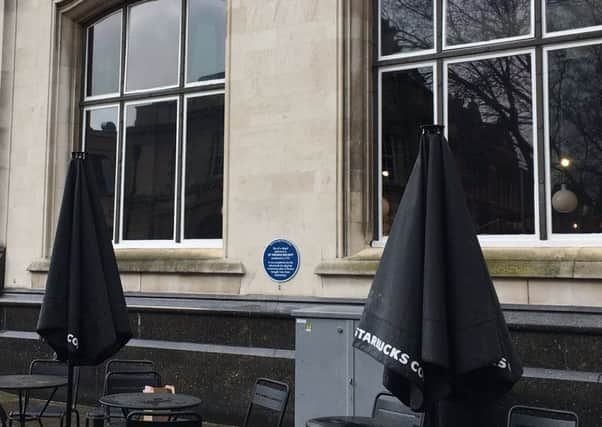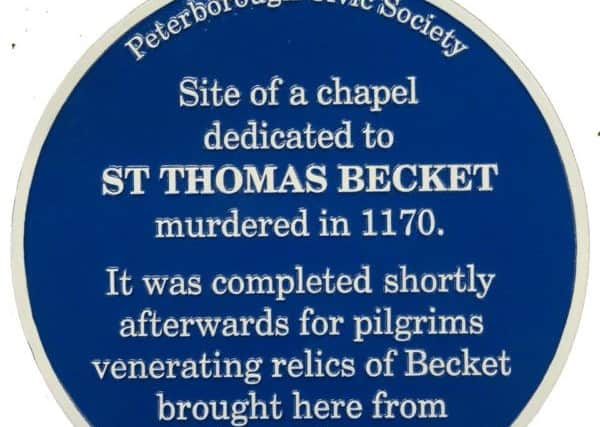First of 20 new Peterborough blue plaques to commemorate city's famous people and places


This plaque is located in Cathedral Square on the former Lloyds Bank building, now Starbucks.
A chapel on this site had been begun by Abbot William de Waterville, shortly after Thomas Becket’s murder in 1170.
Advertisement
Hide AdAdvertisement
Hide AdIt was completed by Abbot Benedict who had succeeded William de Waterville in 1177. Benedict had, at the moment of Becket’s murder, been in Canterbury Cathedral when Henry II’s agents broke in to do the deed.


The martyrdom of Becket marked a turning point in the protracted power struggle between Church and State which dominated the medieval period.
Becket was canonised in 1173. In 1175 Benedict became Prior of Canterbury, keeper of Becket’s relics and guardian of the shrine, thus playing a major role in the propagation of the Martyr’s cult as a focus for pilgrimage both at Canterbury and far beyond.
Following his appointment as Abbot of Peterborough, Benedict was to discover that work towards completion of the Abbey’s nave (now the Cathedral) had come to a standstill.
Advertisement
Hide AdAdvertisement
Hide AdSo, in what has been described as a “memorable act of plunder”, he returned quietly to Canterbury and ‘acquired’ certain relics of Becket’s martyrdom. These seem to have included blood-stained stones, fragments of vestments and two (seemingly self-replenishing) crystal phials of Becket’s blood.


Pilgrims would now leave offerings by the relics, so providing both for a safer passage of their souls through Purgatory and for the completion of the abbey church.
Thus Peterborough became something of a regional centre for the cult which became one of the most important in Europe.
Some of the relics brought from Canterbury are likely to have been housed in the Limoges enamel reliquary or chasse (pictured, courtesy of the V&A) and now in the Victoria and Albert Museum.
Advertisement
Hide AdAdvertisement
Hide AdThis reliquary casket is the finest and largest of more than forty such ‘Becket caskets’ to survive.
Circumstantial evidence suggests that this one was commissioned by Benedict specifically for Peterborough. It may either have been kept in the chapel or, perhaps more likely, near the high altar of the abbey church.
The chapel itself was demolished at the beginning of the 15th century for precise reasons which remain a matter of some discussion.
Immediately adjoining the site is the Great Gate to Peterborough Cathedral precincts and the Cathedral itself with its spectacular West Front.
Advertisement
Hide AdAdvertisement
Hide AdUntil 1539 an abbey, the substantial remains of many of its monastic buildings survive, some adapted to modern functions.
Immediately inside the gate, to the left, stands the chancel added to the Becket Chapel in the 14th century.
This plaque is the first in a series of twenty blue plaques recently installed in the city centre by Peterborough Civic Society.